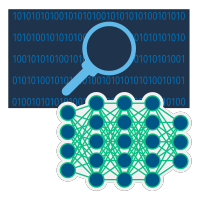By 2020, 50% of organizations will lack sufficient AI and data literacy skills to achieve business value. – Gartner
What is data literacy?
Data literacy is the ability to read, work with, analyze, and argue with data. – Wikipedia
Data literacy is the ability to derive meaningful information from data, just as literacy in general is the ability to derive information from the written word. – WhatIs.com
Why is it important?
As data and analytics become core to the enterprise, and data becomes an organizational asset, employees must have at least a basic ability to communicate and understand conversations about data. Just as it is a given that employees are now competent in word processing and spreadsheets, the ability to “speak data” will become an integral aspect of most day-to-day jobs.
Gone will be the days when data scientists, analysts, and statisticians are the only ones “speaking data.” Valerie Logan, Senior Director Analyst, Gartner, says workforce data literacy must treat information as a second language. Just as we expect all employees today to have a basic level of computer literacy, use email, and understand spreadsheets, employees will also need to be able to understand and speak basic data.
Chris Hemedinger, author of SAS for Dummies, touched on this in his blog a skeptics guide to statistics in the media. He is old enough to remember when USA Today began publication in the early 1980s. He remembers scanning each edition for the USA Today Snapshots, a mini infographic feature that presented some statistics in a fun and interesting way. “Back then, I felt that these stats made me a little bit smarter for the day. I had no reason to question the numbers I saw, nor did I have the tools, skill, or data access to check their work.”
Chris warns that as more and more “news articles and editorial pieces often use simplified statistics to convey a message or support an argument,” we will need to learn that “statistics in the media should not be accepted at face value.” Learning to analyze and understand data and statistics will become increasingly more vital for future generations.
 Best-selling SAS Press author, Ron Cody, cautions that with the augmented technology that allows non-programmers to be able to run complex programs to search databases, summarize data, and conduct statistical tests, it is vital that everyone has a basic understanding of the data and analytics behind the results. “With advances in artificial intelligence, we may be able to tell the computer our problem and let it solve it and tell us the answer.” With technology advancing so quickly with AI, we will all need to understand the data and avoid including bias into our models. Misunderstood data can negatively influence AI algorithms or interpretation of models.
Best-selling SAS Press author, Ron Cody, cautions that with the augmented technology that allows non-programmers to be able to run complex programs to search databases, summarize data, and conduct statistical tests, it is vital that everyone has a basic understanding of the data and analytics behind the results. “With advances in artificial intelligence, we may be able to tell the computer our problem and let it solve it and tell us the answer.” With technology advancing so quickly with AI, we will all need to understand the data and avoid including bias into our models. Misunderstood data can negatively influence AI algorithms or interpretation of models.
The future
Tom Fisher, Senior Vice President of Business Development at SAS explains, “the convergence of model management with data management represents one of the most exciting business opportunities of the future. The merging and blending of these two disciplines should enable the elimination of bias that may occur in the collection and aggregation of data.” Initiatives such as MIT’s Data Nutrition Project address the missing step in the model development pipeline, “assessing data sets based on standard quality measures that are both qualitative and quantitative.” As Fisher concludes, “these kinds of approaches are designed to allow consumers of data, as input to models, to have a more complete understanding of the data that’s being ingested. At the end of the day, the goal of these integrated disciplines is to provide greater accuracy and comfort with the result sets that are being delivered by data scientists and data engineers.”
As the Gartner report quoted earlier notes, as organizations become more data-driven, poor data literacy will become an inhibitor to growth. But not everyone wants to be a statistician or data scientist. This is where the analogy to computer literacy parts ways. We don’t all have to have a statistics degree – AI can help. SAS is developing solutions where AI is augmented into its most sophisticated and powerful solutions to give everyone data literacy. For example, SAS® Model Manager looks at the data and the problem to suggest models. It can then choose the best model based on the user’s criteria, test the model, and score. Technology to report and explain the results, and even answer questions is under development – all in natural language! A virtual personal assistant who can “speak data” and translate.
While data literacy will become increasingly important, so too will tools to help moderate and translate the data that will continue to drive our enterprises and our lives.
Resources:
Become more data literate with our library of Getting Started with SAS, Statistics, Machine Learning, and Data Management books. Visit SAS Books.
Explore SAS Analytics Industry Solutions at sas.com/industry.
